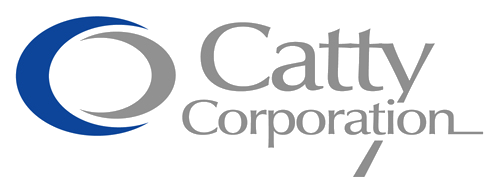Catty Corporation is determined to maintain our commitment to producing quality flexible packaging products while reducing our impact on the world around us.
From Catty Corporation’s dealings with suppliers to its internal procedures around its own facility, Catty Corporation is always looking to make steps towards more environmental friendly conduct.
Inks
Virtually all (+97%) of inks used in Catty packaging products are water based. Water based inks are considerably more eco-friendly than traditional solvent based inks in that, during the ink screen cleaning process, they can be cleaned off with just water rather than using the hazardous cleaning materials needed to clean off solvent based inks.
Our inks have also been formulated to minimize Hazardous Air Pollutants (HAPS) and contain ultra-low Volatile Organic Compounds (VOCs). This makes Catty’s ink less harmful to the environment both during Catty’s waste removal process and the consumer’s post-purchasing use and disposal.
Aside from having very low levels of potentially environmentally harmful chemicals, Catty’s ink also continues to be developed to allow for less volume of ink to be used while still projecting high quality prints on our products. A lesser volume of ink helps reduce both the waste produced from our printing process as well as lowers the energy needed to dry our products during the production process.
Aluminum Foil
All flexible packaging products produced by Catty Corporation utilize aluminum foil. Aluminum foil is widely considered to be an environmentally friendly material. The aluminum foil used by Catty Corporation is generally made of greater than 99.0% pure aluminum and must pass environmental standards for levels of hazardous materials, such as lead and mercury, before it even reaches the press floor.
Aluminum itself is the third most abundant element on Earth and it is one of the most efficiently recycled materials in wide use. Typically, it only takes 5% of the originally required production energy to recycle aluminum back to its original state. Aluminum additionally has the benefit of losing nearly no quality during the recycling process.
Unlike many recycled products, the amount of aluminum put in at the front end of the recycling process is nearly the same as the amount coming out at the end of the process. Of the aluminum that does escape the recycling grasp and is deposited into landfills, aluminum poses no significant environmental hazard to the landfill’s soil.
Paper
In many cases, Catty Corporation’s aluminum foil products are also supported with a paper backing. Paper is often unrightfully criticized as a very wasteful and environmentally unsound resource, but in actuality, paper is a very environmental friendly resource compared to most other natural raw materials.
Unlike metals and fossil fuels, paper is a true sustainable resource. Paper comes from a renewable resource, it is both recyclable and biodegradable, and it can be produced in nearly all corners of the world. Specifically, the paper used in Catty Corporation products comes from several different suppliers that are each committed to minimizing any negative effects their dealings have on the environment. In almost all cases Catty’s paper suppliers are either PEFC or FSC certified and in all cases, suppliers have demonstrated past steps of progress towards a more environmentally sustainable paper production process.
Internal Catty Processes
Aside from the environmental awareness that Catty Corporation has shown through its choice of suppliers and materials used, Catty Corporation has also streamlined and continues to streamline its internal processes to be more energy efficient and more environmentally friendly.
The most elaborate of the environmentally friendly practices at Catty Corporation is the highly enforced recycling of scrap aluminum as well as scrap paper products. Catty Corporation collects and bails aluminum and paper scrap and sends them out to a recycling company to be converted for new use.
In addition to the recycling of raw materials, heat energy produced from the printing presses is recycled during the winter months and is used to heat the manufacturing sectors of the plant. During the summer months, Catty Corporation allows local farmers to use its excess land to grow additional crops which puts such unused land to good use and assures that Catty Corporation soil is in healthy shape.
Aside from processes put in place by Catty Corporation, internal audits have historically shown that Catty Corporation’s emission levels are consistently significantly below the Illinois EPA’s Title 5 Clean Air Act’s allotted emission levels. This classifies Catty Corporation as a minor source of harmful emissions, the lowest classification given to Illinois businesses.
Although emission levels are at a highly acceptable level, Catty Corporation continues to work to lower its pollutant output and energy use by making changes such as installing more energy efficient lighting throughout the plant and upgrading press motors and drives to more energy efficient models.
Catty Corporation recognizes the need to coexist with the environment and has, and will continue to improve its sustainability at all levels of production. By continuing to strive to make materials cleaner and to use processes that run more efficiently, Catty Corporation is doing its part to preserve a healthy environment.

